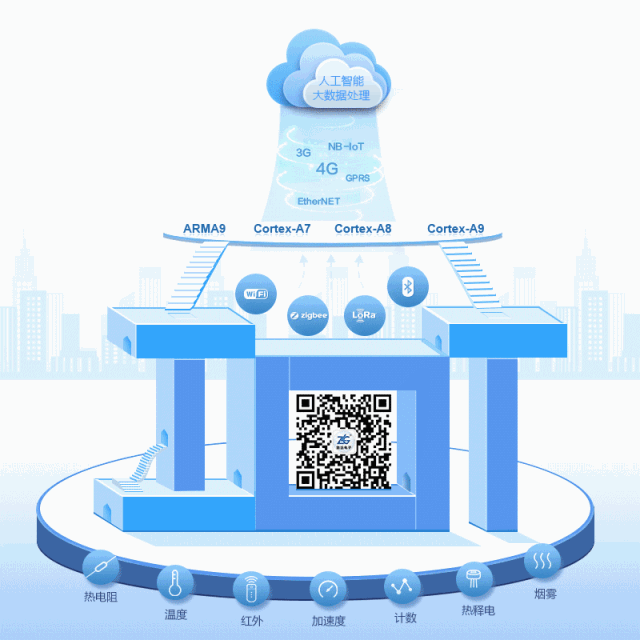This article overview
In actual bus applications, have you encountered the following issues?
1. Device and Personal Safety — Potential High Voltage Hazards
The usage environment of CAN and RS-485 buses is very complex, and some harsh operating conditions may present high voltage hazards. This can easily lead to electric shock risks, endangering personal safety or equipment.
2. Remote Data Reception Failure — Ground Potential Difference Exists
In many practical applications, communication distances can reach several kilometers, with significant distances between nodes. Designers often directly connect each node’s reference ground to the local earth as the return ground for signals, which may seem like a reliable practice, but it poses significant risks! Even systems that are functioning normally during debugging can encounter various issues after a period of use.
A commonly overlooked issue is that there can also be a significant potential difference between the earth grounds of two nodes!!! The actual ground is not an ideal “0” potential; the ground is also a conductor and has impedance. When large currents flow through the ground, there will also be a potential difference across the two ends of the ground where the current flows. As shown in Figure 1.
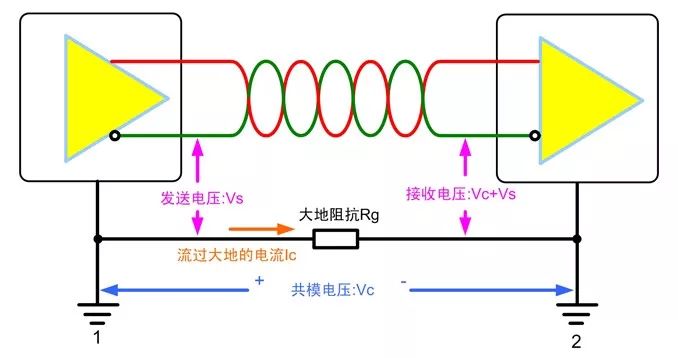
Figure 1
If the communication nodes that are far apart are directly connected to their respective local grounds, the ground potential difference will be superimposed on the output of the bus transmitter in the form of common-mode voltage. The superimposed signal may far exceed the common-mode input voltage range that the receiver can withstand, preventing normal signal reception and potentially damaging the transceiver. Ordinary CAN and RS-485 transceivers have a small common-mode input range; for instance, the SN65HVD251 and SP3085 transceivers only support a common-mode input range of -7 to +12V. The potential difference caused by the large currents flowing through the ground from various large devices can reach several volts, tens of volts, or even hundreds of volts, far exceeding the voltage range that the transceiver can withstand.
3. Sudden Data Errors or Device Damage — Ground Loop Effects
Since there is a potential difference in the ground between nodes, wouldn’t connecting the ground of the two nodes directly with a wire solve the problem? This is a huge mistake! Doing so will only exacerbate the situation; this long wire will form a massive ground loop with the earth!
As you may have learned in school, a closed loop will generate current in a changing magnetic field. 50Hz AC power lines, large motors, etc., are sources of alternating magnetic fields. If the bus is near or passes through these areas, the ground loop can generate currents of several amperes or even hundreds of amperes. The common-mode voltage generated by the current flowing through the ground loop will affect normal communication on the bus.
In addition to stable magnetic field sources, various transient disturbances such as surges from power lines, lightning strikes, and high-frequency noise can also be picked up by this giant “loop antenna,” causing communication anomalies.
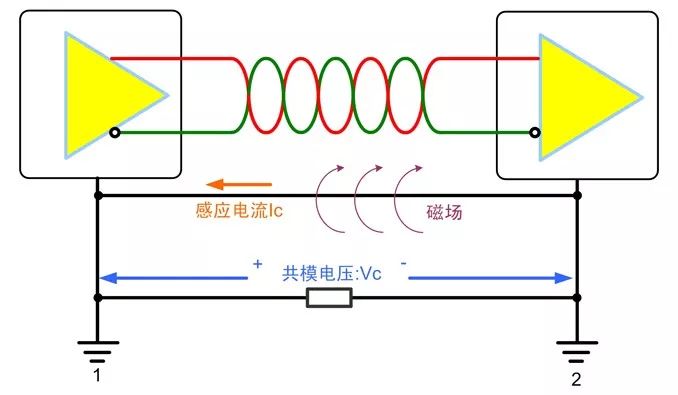
Figure 2
4. What to Do?
Replace the CAN and RS-485 transceivers you are currently using with isolated CAN and RS-485 transceivers!
Isolated transceivers can electrically isolate the bus from the control circuit, blocking high voltage from the control system, effectively ensuring the safety of operators and the system. Moreover, isolation can suppress various common-mode interferences caused by ground potential differences and ground loops, ensuring uninterrupted and error-free operation of the bus even in the presence of severe interference and other system-level noise. As shown in Figure 3, using isolated transceivers can effectively prevent the formation of ground loops, allowing the bus reference ground to fluctuate with common-mode voltage, with the common-mode voltage entirely borne by the isolation barrier, making the common-mode voltage invisible to the bus signal, thus ensuring stable and reliable communication on the bus.
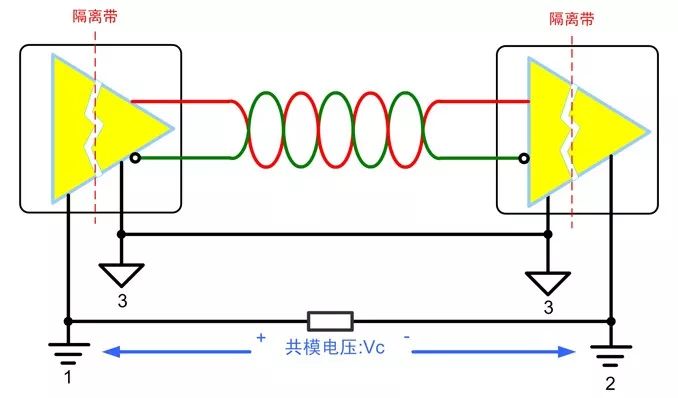
Figure 3
5. How to Achieve Isolation?
There are mainly two methods to achieve bus isolation: one is to use isolated DC-DC converters, optocouplers, and other discrete devices to isolate the nodes from the transceivers. This method results in a more complex circuit and a larger size, making it difficult to meet the current high integration requirements of electronic products. The other method is to use isolated transceivers directly, which is a single product with a simple design and high integration.
ZLG Zhiyuan Electronics focuses on the R&D of isolated power supplies and isolated communication products. Their CTM and RSM series isolated transceivers have received wide recognition in the market. These products retain the design concept of traditional isolation circuits, including power isolation and electrical isolation. More importantly, a comprehensive testing system and advanced processes ensure product consistency, with numerous advantages such as waterproofing, shock resistance, and extended service life. The products utilize potting technology, providing continuous protection for circuit boards and electronic components against moisture, vibration, overheating, corrosion, and radiation, extending product life. The integrated communication isolation module provides customers with greater value compared to discrete component designs, as shown in Table 1.
Table 1 Comparison of Solutions
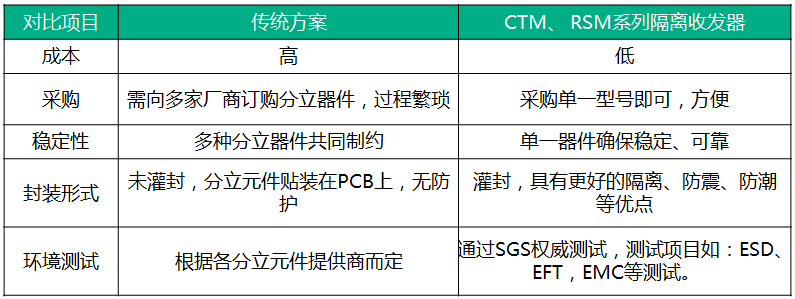
ZLG Zhiyuan Electronics provides you with high-quality and reliable isolated CAN transceivers and isolated RS-485 transceivers, with full isolation of power and signal, and isolation withstand voltage of up to 2500VDC and above, safeguarding your CAN and RS-485 bus!

Reply with the keyword 【Power Supply】 in the backend to view more technical topics.
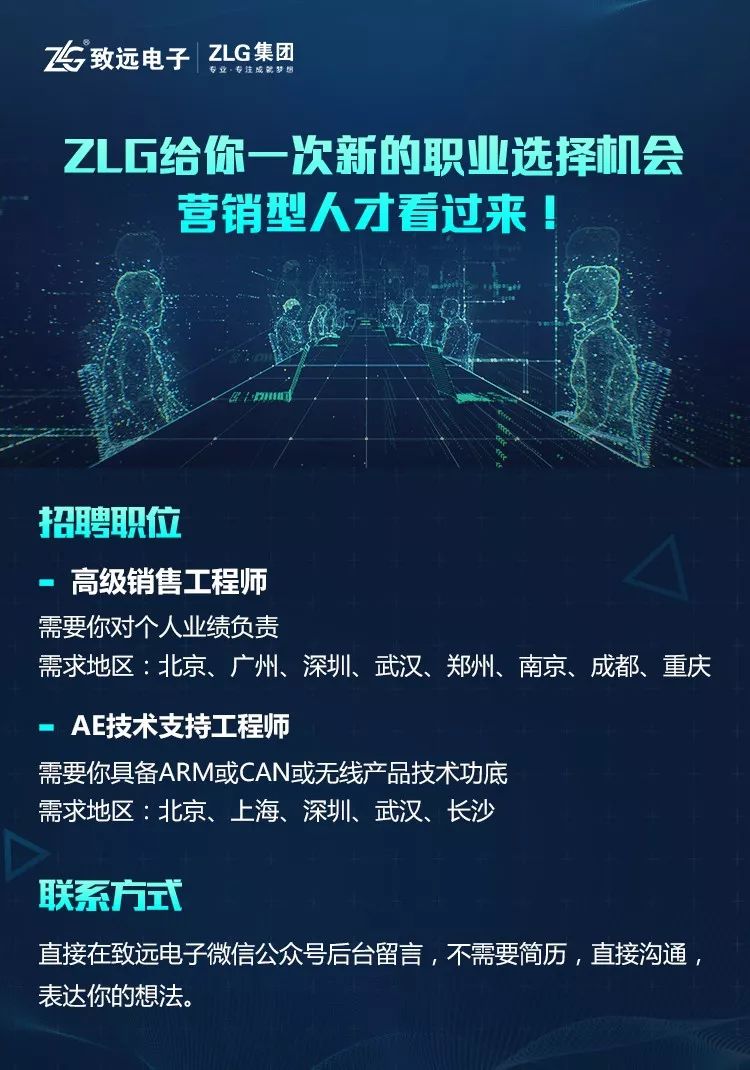
Official Account Introduction
Zhi Yuan Electronics official WeChat account, a platform gathering 500 engineers for R&D testing sharing, providing you with leading product technologies and solutions in the electronics industry..
